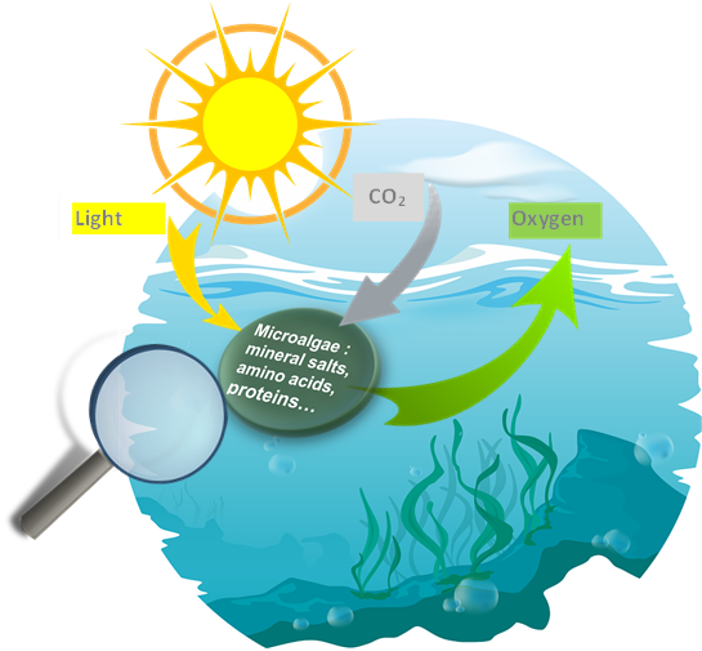

Environment: microalgae to the planet’s rescue
October 13, 2020

In the living world, it is sometimes the smallest organisms that play the biggest role in maintaining the balance our planet needs. Microalgae, microscopic marine plants, were among the first living organisms that fostered life on earth. Today, they are vital in reducing the effects of pollution and responding to the climate challenge.
The first link in the aquatic food chain, microalgae have been living in our seas, lakes and streams for billions of years. We estimate that there are between 200,000 and several million species in the wild. Without them, life as we know it would not be possible.
Why are they so important? Their physiological functioning and photosynthesis mean that:
- They are powerful carbon sinks that trap CO2 from the atmosphere
- They release 2/3 of the oxygen they breathe, representing half the oxygen in the atmosphere
- In our seas and oceans, they help absorb 90% of additional heat generated by greenhouse gases
- They synthesize organic molecules vital for life from light and minerals, offering us impressive concentrations of active compounds: protein (up to 75% of their dry weight, twice as much as soya beans), amino acids (5-20 %), carbohydrates (up to 20 %), lipids, Omega-3, vitamins, trace elements (cooper, iron and zinc) and mineral salts.

Developed during the 20th century, microalgae cultivation techniques have been perfected. Today, microalgae are generating interest across many sectors from food to well-being, pharmaceuticals, cosmetics and aquaculture. Following the 1979 petrol crisis, we also began exploring ways to combine them with biofuels as an energy source.
Reducing pollution
The way their metabolism works has many advantages for the environment, and in particular, fighting pollution. Building on tried-and-test methods, a multitude of experiments are widening their scope within our ecosystem:
- Treating used water (lagooning): microalgae feed on nitrates, nitrogen and other oxides to purify water
- Recycling industrial fumes: carbon dioxide (CO2) and nitrogen oxides (Nox) are captured by microalgae, limiting greenhouse gas emissions
- Bio-filters in urban areas: capable of absorbing up to 99% of fine particles and up to 97% of nitrogen oxides, microalgae are increasingly being integrated into urban landscapes, for example, in bio-facades, bio-columns or asphalt
Carbon sinks to save the oceans
Microalgae are one of proposed solutions for reaching the Paris Agreement target of keeping global temperature rise this century below 2°C. But global warming is also having an impact the temperature of seas and oceans, disrupting marine biodiversity and their capacity to absorb CO2. Protecting marine ecosystems, while also encouraging innovation in controlled microalgal cultivation is therefore more important than ever. Microalgae enabled humans to live on earth. The time has come to ensure that they too can live and grow in the right conditions.




